Living Room
13 Deck Skirting Ideas to Improve Your Outdoor Space
Deck skirting is a great way to give your outdoor living area some individuality. You may create a gorgeous look that blends in with the landscaping and architecture of your house with the correct design and skirting materials.
We’ll look at some innovative deck skirting ideas in this post that will elevate your deck to a new level.
Deck Skirting Materials
When designing or updating your outdoor deck, one element that’s both functional and decorative is the skirting. There are several types of materials available for deck skirting, including wood, vinyl, metal, PVC, and composite options.
Wood remains a timeless favorite due to its natural appearance, although it typically needs more upkeep than synthetic materials. For those looking for low-maintenance solutions, vinyl and PVC are durable and resistant to weather and pests. Metal options are also long-lasting and offer a more modern look. Composite deck skirting is ideal for those who want the charm of wood without the extra maintenance.
When deciding on materials, think about your budget, the climate in your region, and the overall aesthetic you’re aiming for.
Horizontal Wooden Deck Skirting
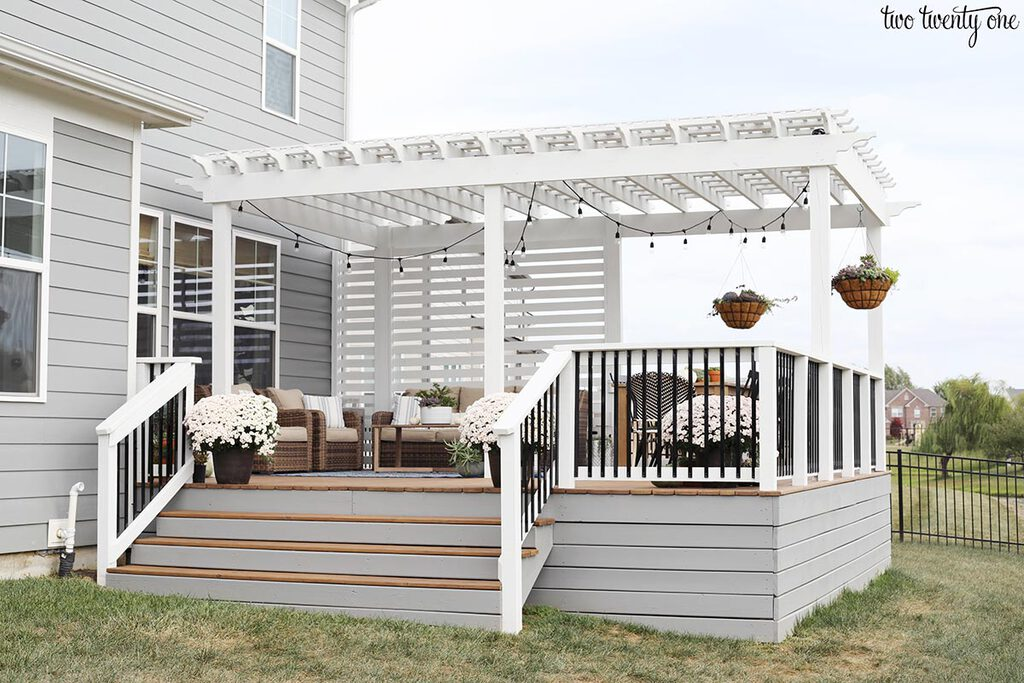
Among the many skirting styles available, horizontal wood panels are a popular and flexible choice. This design offers a clean, modern profile that suits a range of home exteriors.
You can stain or paint the horizontal slats to coordinate with your home or deck, creating a cohesive, custom finish. This skirting approach is also useful for preventing critters from getting underneath your deck while maintaining airflow.

Some homeowners choose to match horizontal skirting with other exterior features like fencing for visual consistency. Varying the width of the boards or alternating wood sizes can add a contemporary flair to the design. Adding a discreet access door to your skirting can also turn the space beneath your deck into valuable hidden storage.
Vertical Wood Deck Skirting
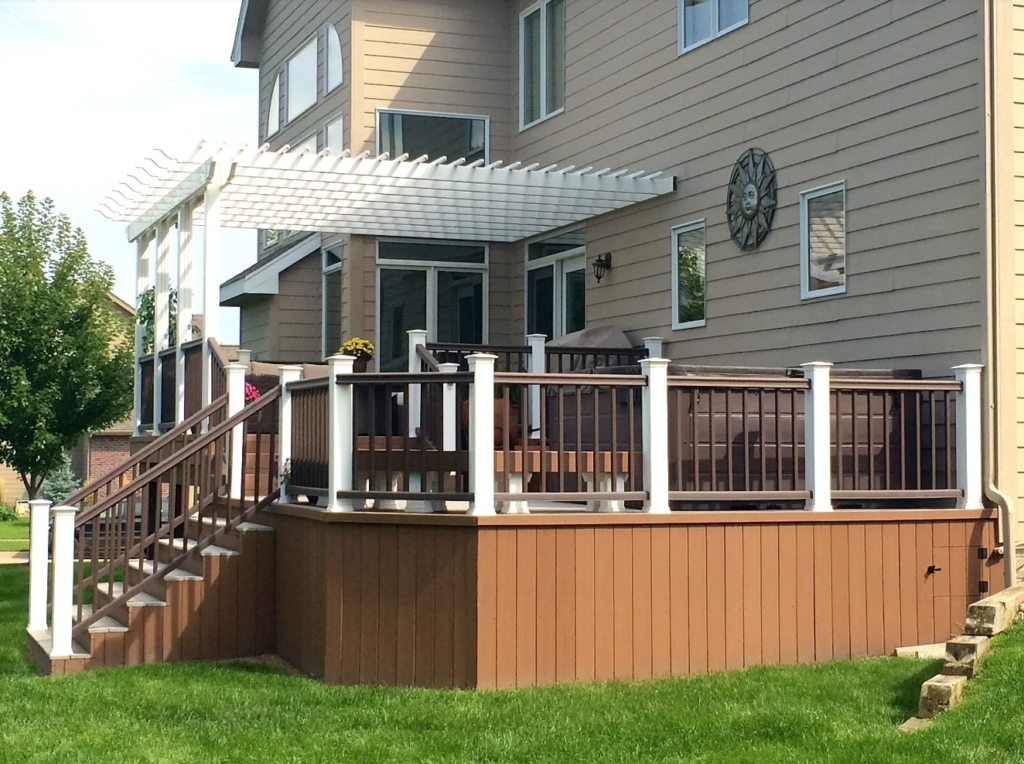
Vertical deck skirting is another attractive choice that provides a sleek, structured look. It enhances airflow under the deck and gives your outdoor space a refined, intentional feel.
Proper installation ensures both functionality and long-term durability. You can use vertical boards to complement railings or porch features, making your entire outdoor area feel unified and well-designed.
Whether stained, painted, or left natural, vertical skirting is a great way to bring both style and utility to your deck’s foundation.
Lattice Skirting

Square Lattice
Square lattice skirting combines form and function. Its grid-like pattern helps keep animals and debris out, while allowing for proper ventilation.
This design is relatively easy to install and available in various colors, sizes, and materials. Square lattice is often chosen for its classic appearance and minimal maintenance requirements, making it a go-to option for many homeowners.
Diamond Lattice
For a more decorative alternative, diamond lattice offers an elegant twist on traditional skirting. The diagonal pattern provides visual interest and blends well with both rustic and contemporary deck styles.
Aside from aesthetics, it also maintains good airflow and hides the structural components underneath your deck. Diamond lattice is ideal if you’re looking to add charm while covering exposed deck areas.
Modern Lattice
Modern lattice styles are sleek and stylish, offering a fresh take on a traditional design. These panels often use sturdy materials like vinyl or pressure-treated wood and feature tighter patterns or unique geometric layouts.
They are ideal for homeowners wanting a contemporary outdoor vibe while still benefiting from airflow and pest control.
Vinyl Lattice

Vinyl lattice is a top pick for homeowners seeking durability and ease of care. It resists warping, rot, and insect damage, even in harsh weather conditions.
Available in an array of colors and designs, vinyl lattice can easily be tailored to fit your home’s exterior look. It’s also one of the simpler DIY skirting projects, making it a great choice for those looking to enhance curb appeal on a budget.
Wood and Stone Deck Skirting

For an elevated, textured look, try combining wood with natural stone. This pairing creates a striking contrast that can dramatically enhance the visual appeal of your deck.
Stone pillars or accents lend a sophisticated touch, while wood provides warmth and balance. You can even mix different lattice sizes or materials for a more dynamic design that sets your deck apart.
Low Profile Deck Skirting
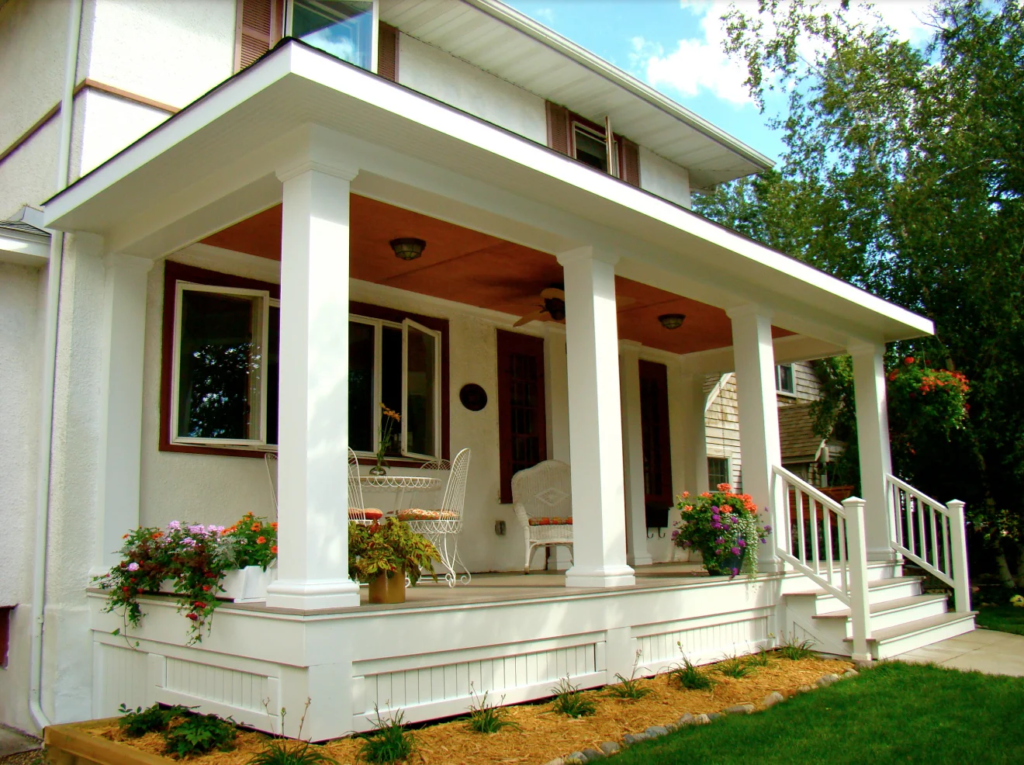
If you’re working with a low-elevation deck, low profile skirting is the way to go. Materials like lattice, composite panels, or wood slats are ideal for this setup and still provide effective concealment and protection.
To add more detail, consider incorporating trim or molding. Using different wood widths or alternating installation directions can also create a modern or craftsman-style finish. Simplicity works well here—clean lines and minimal accents often make the biggest impact.
Stone Deck Skirting
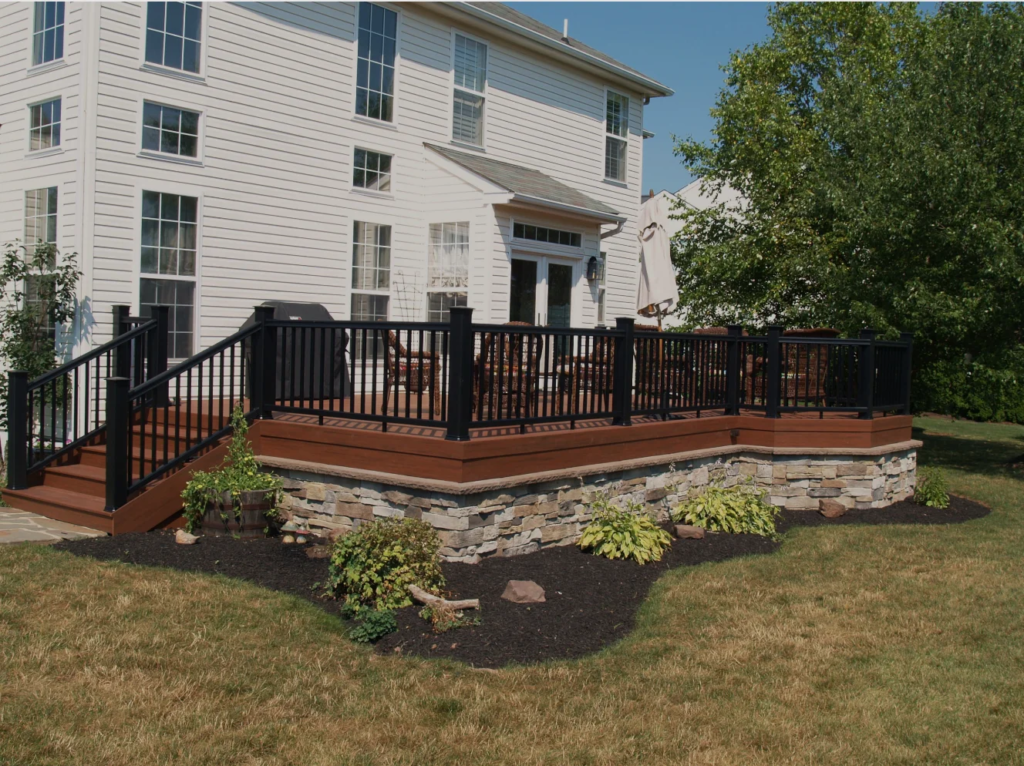
Stone skirting is a luxurious and long-lasting option that transforms your deck from standard to standout. It hides the underdeck area while enhancing the structural look of your outdoor space.
With choices like fieldstone, limestone, or stacked veneer, stone skirting pairs beautifully with both rustic and modern designs. Plus, its resistance to weathering ensures that it will remain visually appealing and structurally sound for years.
Brick Deck Skirting
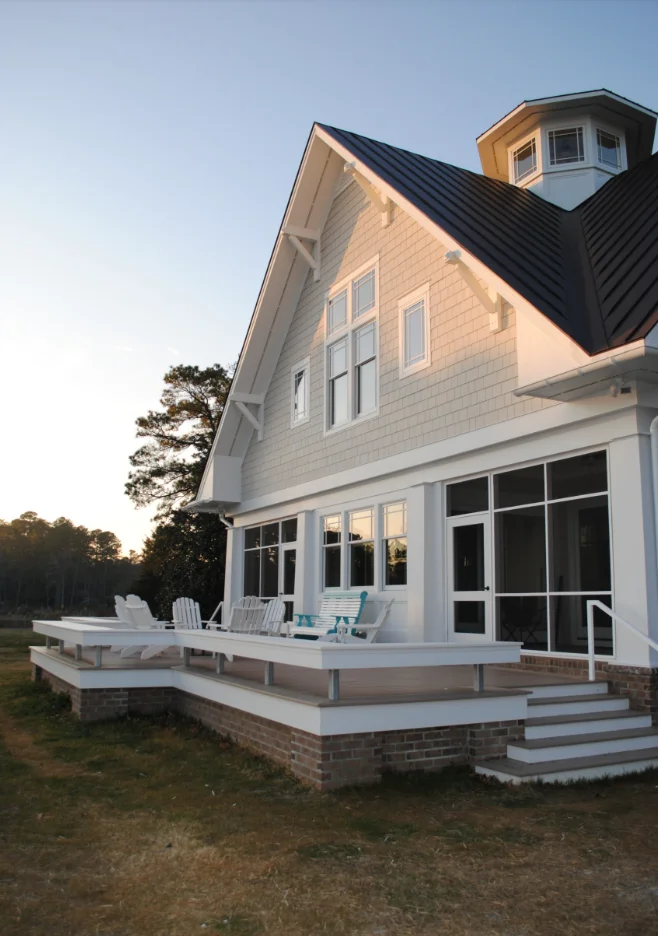
Brick skirting offers durability and timeless appeal. It’s a solid choice for traditional or colonial-style homes and blends effortlessly with various landscaping elements.
In addition to enhancing aesthetics, brick provides insulation benefits by helping to regulate temperature beneath the deck. With the right care, it can offer long-term beauty and function for decades.
Shaker Shingles Deck Skirting

Shaker shingles, particularly cedar, provide a cozy, classic look that fits well with cottage-style or rustic homes. They offer texture and depth, making the base of your deck look more like an intentional design element than just a covering.
Shingle skirting can also be painted or stained to suit your home’s palette and complements other wood details beautifully.
FAQ
What is the cheapest way to close in under a deck?
Wire mesh is among the most budget-friendly skirting solutions. It keeps pests out and allows airflow but does little to hide what’s underneath the deck.
How much does it cost to install deck skirting?
Professional installation costs can range from $2 to $60 per linear foot, depending on the material. DIY installations may reduce costs but require careful measurement and planning.
What is the best skirting to use?
The best option depends on your priorities—budget, appearance, maintenance, and climate. For example, vinyl is great for low maintenance, while wood suits those wanting a natural, traditional look.
Final Words
Deck skirting is more than just a finishing touch—it plays an important role in aesthetics, ventilation, and protection. Whether you’re after a sleek modern look or a rustic natural feel, there’s a skirting style and material to match your home. With countless deck skirting ideas to explore, it’s easy to create a functional and beautiful outdoor space.

